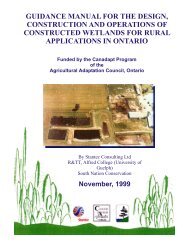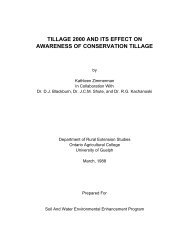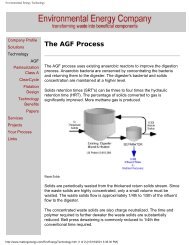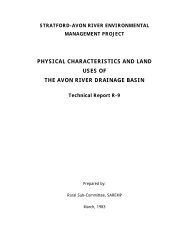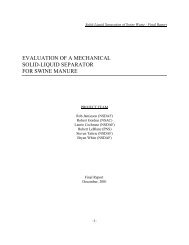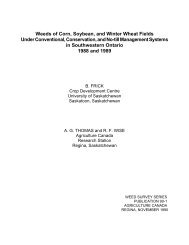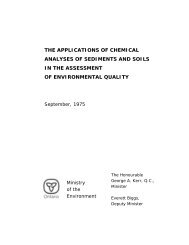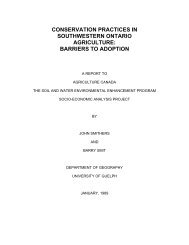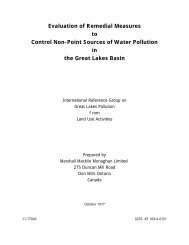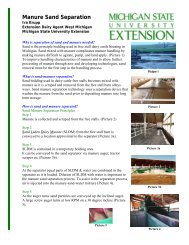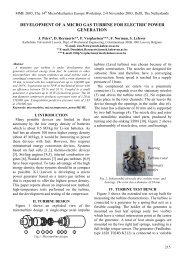Environmental Aspects of Phosphate and Potash Mining United ...
Environmental Aspects of Phosphate and Potash Mining United ...
Environmental Aspects of Phosphate and Potash Mining United ...
You also want an ePaper? Increase the reach of your titles
YUMPU automatically turns print PDFs into web optimized ePapers that Google loves.
Overview <strong>of</strong> <strong>Phosphate</strong> Rock <strong>and</strong> <strong>Potash</strong> <strong>Mining</strong> <strong>and</strong> Beneficiation<br />
12<br />
Figure 2.2<br />
Common potash mining processes <strong>and</strong> equipment<br />
Extraction<br />
H<strong>and</strong>ling<br />
Underground<br />
Solution<br />
Surface<br />
Beneficiation / concentration<br />
Size reduction<br />
Desliming<br />
Concentration<br />
Dewatering<br />
Drying<br />
Compaction<br />
Granulation<br />
Storage<br />
Continuous mining<br />
machine<br />
Longwall<br />
Load-haul-dump (LHD) units<br />
Drill <strong>and</strong> blast<br />
Injection wells<br />
Recovery wells<br />
Evaporation ponds<br />
Shuttle cars<br />
Conveyors<br />
Feed bins<br />
Shaft or decline haulage<br />
Brine pipelines<br />
Cooling ponds<br />
Crushing<br />
Grinding<br />
Screening<br />
Hydrocyclones<br />
Attrition scrubbing<br />
Hydrocyclones<br />
Flotation<br />
Thermal dissolution-<br />
-crystallization<br />
Electrostatic separation<br />
Heavy-media separation<br />
Filters<br />
Thickeners<br />
Centrifuges<br />
Rotary ovens<br />
Fluidised bed dryers<br />
Rotary compactor<br />
Granulator<br />
Conveyors<br />
Sheds<br />
Although it is not strictly mining, the concentration <strong>of</strong><br />
brine in solar evaporation ponds is another method <strong>of</strong><br />
producing potash ore. The method relies on the evaporation<br />
<strong>of</strong> brine through a series <strong>of</strong> shallow ponds.<br />
The initial ponds are used to precipitate halite (NaCl)<br />
<strong>and</strong> concentrate the desired minerals, the brine is then<br />
pumped into a second series <strong>of</strong> ponds in which the<br />
potash ore, mostly carnallite, is precipitated. The carnallite<br />
is harvested <strong>and</strong> pumped as a slurry to<br />
beneficiation facilities for processing.<br />
<strong>Potash</strong> Beneficiation<br />
The processing <strong>of</strong> potash generally involves a series <strong>of</strong><br />
steps including:<br />
Size reduction;<br />
Desliming;<br />
Separation;<br />
Drying;<br />
Compaction <strong>and</strong> granulation;<br />
Disposal <strong>of</strong> the waste streams.<br />
The specific process employed will depend on factors<br />
such as the characteristics <strong>and</strong> constituents <strong>of</strong> the<br />
potash ore <strong>and</strong> the market specifications.<br />
Generally, the ore is reduced in size using a system <strong>of</strong><br />
crushing <strong>and</strong> grinding to liberate the different minerals<br />
from each other. This is usually followed by<br />
desliming by intense agitation followed by flotation or<br />
hydrocyclones to separate the fines consisting <strong>of</strong> clays,<br />
dolomite <strong>and</strong> s<strong>and</strong> from the potash ore.<br />
Four basic techniques are used to separate the waste<br />
minerals or by-products such as salt <strong>and</strong> concentrate<br />
the potash; flotation, electrostatic separation, thermal<br />
dissolution-crystallization, <strong>and</strong> heavy media separation.<br />
Several <strong>of</strong> these may be used together to enhance<br />
recovery.<br />
Flotation is the most widely used technique, relying on<br />
the difference in surface properties between minerals<br />
to selectively float the desired mineral. Electrostatic<br />
separation is a dry process in which the minerals are<br />
separated using their different electrical conductivities.<br />
Thermal dissolution-crystallization relies on the<br />
same principle as solution mining, whereby a heated<br />
brine preferentially dissolves potassium chloride.<br />
Heavy media separation relies on the difference in specific<br />
gravity between sylvite <strong>and</strong> halite to selectively<br />
float <strong>and</strong> remove the lighter sylvite particles.



